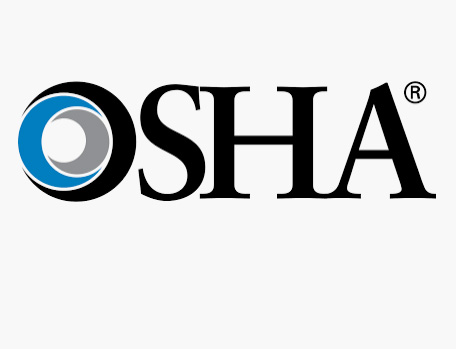OSHA Issues New Workplace Rule on Chromium
WASHINGTON – The Labor Department reduced the acceptable workplace exposure levels Monday to a cancer-causing metal, hexavalent chromium. However, critics said the new standard still leaves thousands of workers at risk.
The new rule limits worker exposure to carcinogenic metal to no more than five micrograms per cubic meter of air, a significant reduction from the old standard but also a level five times higher than what had been proposed by the agency two years ago. The old standard, issued in 1971, was 52 micrograms per cubic meter of air.
Hexavalent chromium is used in chrome plating, stainless steel welding, and the production of chromate pigments and dyes. An estimated 558,000 workers, from welders and steelworkers to jewelers, are exposed to its airborne particles linked to lung cancer.
The new requirement “substantially reduces the significant health risks” for employees exposed to the material, said Jonathan Snare, acting assistant secretary for occupational safety and health at the department, in a statement.
In a conference call with reporters, Snare said the five microgram permissible exposure level, or PEL, “is the lowest level feasible both technologically and economically.” He said the standard would cost the industry $282 million annually. He said it would avoid 100 to 145 cancers a year among the nearly 67,000 workers currently exposed to airborne levels of hexavalent chromium of more than five micrograms. About 88 percent of the workers are in workplaces where airborne levels already meet or exceed the new standard.
“We understand and acknowledge there is a remaining significant risk at the new PEL,” said Snare.
The department’s Occupational Safety and Health Administration, which is issuing the standard under a court order, estimated that the five-microgram standard would result in 10 to 45 additional cancers over a lifetime for every 1,000 workers exposed, compared to 2.1 to 9.1 other cancers per
One thousand workers under a one microgram standard.
“This represents significant additional risks to workers,” said Peter Lurie, deputy director of Public Citizens’ Health Research Group. This private advocacy group sued to force OSHA to issue a new standard.
“This agency had to be sued to issue anything. Now they will have to be sued again to do something that adequately protects American workers,” said Lurie in an interview. Public Citizens and unions representing workers in some industries involved maintain that airborne levels of hexavalent chromium should be kept at no more than 0.25 micrograms per cubic meter of air to assure adequate safety. They also argue the technology and economic cost issue can be resolved by dealing with various industries separately.
A study conducted by a group of George Washington University researchers and released last week by Public Citizen claimed the chromium industry withheld from OSHA critical data on the health risks of hexavalent chromium. It said industry groups gave OSHA selected data suggesting only
the highest level of exposure led to a significantly higher risk of lung cancer deaths.
Officials from the Specialty Steel Industry of America, a primary industry group, did not return telephone calls for comment on the new OSHA standard. An attorney for the trade group Chrome Coalition, Kate McMahon, said last week the industry had not manipulated data. Instead, part of a study it commissioned was never sent to OSHA because it was not peer-reviewed and
then was overlooked when the company coordinating the research went
bankrupt.
Snare said Monday that the recent report by researchers at the George Washington University’s School of Public Health and Health Services had been considered but “did not add additional information” that would have affected the agency’s risk assessment.
David Michaels, author of the report, called the OSHA standard “weak” and said it would “leave a large number of workers dangerously exposed to carcinogens.”
“The chromium industry was able to convince the White House to weaken the standard across the board, so science went out the window,” Michaels said.
Additional Information:
Environmental Health http://www.ehjournal.net/content/5/1/5
Excerpt:
While exposure to hexavalent chromium (Cr(VI)) has been associated with increased lung cancer risk for more than 50 years, the chemical is not currently regulated by the U.S. Occupational Safety and Health Administration (OSHA) based on its carcinogenicity. The agency was petitioned in 1993 and sued in 1997 and 2002 to lower the workplace Cr(VI) exposure limit, resulting in a court order to issue a final standard by February 2006.
Selected science: an industry campaign to undermine an OSHA hexavalent chromium standard
David Michaels, Celeste Monforton, and Peter Lurie
The Project on Scientific Knowledge and Public Policy, Department of Environmental and Occupational Health, The George Washington University School of Public Health and Health Services, 2100 M Street N.W., Suite 203, Washington, DC, 20037, USA
2Public Citizen Health Research Group, 1600 20th Street NW, Washington, DC, 20009, USA
By H. JOSEF HEBERT, Associated Press Writer
We’re leading in automation and robotic technologies. Moreover, we offer quality commercial sandblasting equipment for sale at affordable prices. Above all, we sell industrial blast equipment and replacement parts from industry leaders such as RPB® Nova™, Schmidt® Axxiom, Empire®, Clemco®, Monti® MBX™, Sponge-Jet®, Nederman®, and Adapt Laser®
Visit our Google Business Page.


